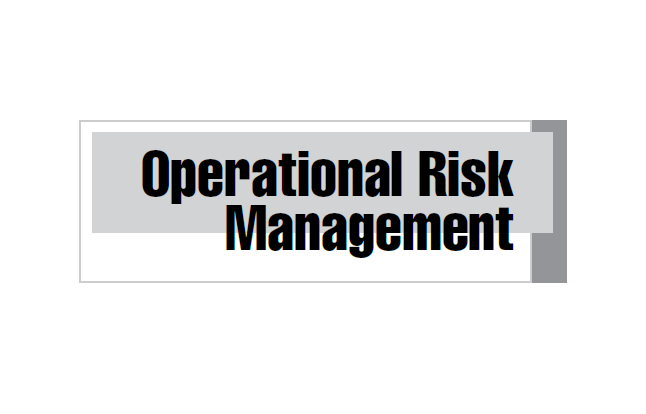Strategic Management: A Comprehensive Guide to Navigating Business Success
Outline
| Main Headings | Subheadings |
|---|---|
| 1. Introduction to Strategic Management | – Definition and Importance of Strategic Management |
| – Evolution of Strategic Management | |
| 2. Strategic Planning Process | – Vision, Mission, and Objectives |
| – Environmental Scanning | |
| – Strategy Formulation | |
| 3. Types of Strategic Management | – Corporate Strategy |
| – Business Strategy | |
| – Functional Strategy | |
| 4. Strategic Analysis Tools | – SWOT Analysis |
| – PESTEL Analysis | |
| – Porter’s Five Forces | |
| 5. Implementation of Strategy | – Strategy Implementation Process |
| – Organizational Structure | |
| – Change Management | |
| 6. Role of Leadership in Strategic Management | – Leadership Styles in Strategic Management |
| – Decision-Making Processes | |
| 7. Challenges in Strategic Management | – Common Challenges |
| – Overcoming Challenges | |
| 8. Case Studies in Strategic Management | – Successful Strategic Management Examples |
| – Lessons Learned | |
| 9. Future of Strategic Management | – Emerging Trends in Strategic Management |
| – Technology and Innovation | |
| 10. Practical Applications | – Strategic Management in Small Businesses |
| – Strategic Management in Multinational Corporations | |
| 11. Conclusion | – Summary of Key Points |
| – Final Thoughts and Call to Action | |
| 12. FAQs on Strategic Management | – What is Strategic Management? |
| – How does Strategic Management benefit a business? | |
| – What are the key steps in Strategic Management? |
Introduction to Strategic Management
Definition and Importance of Strategic Management
Situasi ID – Strategic Management: A Comprehensive Guide to Navigating Business Success. Strategic management is the process through which organizations define their strategy or direction and make decisions on allocating resources to pursue this strategy. It plays a crucial role in ensuring the long-term success of a business by aligning the company’s mission and vision with its actions. Effective strategic management enables organizations to respond proactively to changes in the external environment, maintaining a competitive edge in the market.
Evolution of Strategic Management
Strategic management has evolved significantly over the years, from basic financial planning in the 1950s to the complex, multidimensional approach it is today. Initially focused on budgeting and control, the discipline has grown to incorporate a wide array of tools and frameworks designed to guide businesses through uncertain and dynamic markets.
Strategic Planning Process
Vision, Mission, and Objectives
At the heart of strategic management lies the development of a clear vision, mission, and set of objectives. The vision articulates the future direction of the company, the mission defines its purpose, and the objectives set specific, measurable targets to achieve. Together, they form the foundation upon which all strategic decisions are made.
Environmental Scanning
Environmental scanning involves analyzing both the internal and external environments in which a company operates. This process helps identify opportunities and threats in the market, as well as internal strengths and weaknesses. Tools like SWOT analysis are commonly used during this phase to ensure a comprehensive understanding of the business landscape.
Strategy Formulation
Once the vision, mission, and objectives are established, and the environment is thoroughly scanned, the next step is strategy formulation. This involves developing plans and tactics that align with the company’s goals and the realities of its operating environment. Strategy formulation requires creativity, analysis, and a deep understanding of the industry and competitors.
Types of Strategic Management
Corporate Strategy
Corporate strategy focuses on the overall scope and direction of an organization and how it adds value to the different business units within it. Decisions made at this level include mergers and acquisitions, diversification, and overall corporate growth strategies.
Business Strategy
Business strategy pertains to how a company competes within a particular market or industry. It involves decisions related to product development, market positioning, and competitive advantage. The goal is to achieve a sustainable competitive position within the market.
Functional Strategy
Functional strategy refers to the specific strategies implemented within key functional areas of a business, such as marketing, finance, and operations. These strategies support the overall business strategy and ensure that each department contributes effectively to the company’s goals.
Strategic Analysis Tools
SWOT Analysis
SWOT analysis is a strategic planning tool used to identify the strengths, weaknesses, opportunities, and threats of an organization. It provides a clear framework for analyzing internal capabilities and external market conditions, helping to guide strategic decisions.
PESTEL Analysis
PESTEL analysis examines the external macro-environmental factors that affect an organization, including Political, Economic, Social, Technological, Environmental, and Legal factors. This tool is essential for understanding the broader context in which a business operates and for anticipating potential challenges and opportunities.
Porter’s Five Forces
Porter’s Five Forces is a model that analyzes the competitive forces within an industry, including the threat of new entrants, bargaining power of suppliers, bargaining power of buyers, the threat of substitute products, and the intensity of competitive rivalry. This tool helps companies understand the dynamics of their industry and devise strategies to enhance their competitive position.
Implementation of Strategy
Strategy Implementation Process
Implementing a strategy involves translating the formulated plans into actionable steps. This process requires careful coordination and communication across the organization to ensure that everyone is aligned with the strategic objectives. Effective implementation often requires change management and the restructuring of existing processes and systems.
Organizational Structure
The organizational structure plays a critical role in the successful implementation of a strategy. A well-designed structure facilitates clear communication, efficient decision-making, and effective resource allocation. Depending on the strategy, a company may adopt a functional, divisional, matrix, or flat organizational structure.
Change Management
Change management is an integral part of strategy implementation, especially when significant changes are involved. It involves preparing, supporting, and helping individuals and teams adapt to new strategies, processes, or structures. Successful change management ensures that the organization remains agile and responsive to evolving market conditions.
Role of Leadership in Strategic Management
Leadership Styles in Strategic Management
Leadership is crucial in strategic management, as it influences how strategies are developed and implemented. Different leadership styles, such as transformational, transactional, and servant leadership, can impact the effectiveness of strategic initiatives. The right leadership style can inspire and motivate employees, fostering a culture that supports the strategic direction of the company.
Decision-Making Processes
Effective decision-making is at the core of strategic management. Leaders must be able to make informed decisions that align with the company’s strategic goals. This requires a deep understanding of the industry, market trends, and the internal capabilities of the organization. Decision-making processes should be data-driven, inclusive, and aligned with the company’s mission and values.
Challenges in Strategic Management
Common Challenges
Strategic management is not without its challenges. Common issues include resistance to change, lack of alignment between strategy and organizational culture, and insufficient resources. These challenges can hinder the successful implementation of strategies and ultimately impact the company’s performance.
Overcoming Challenges
To overcome these challenges, companies must adopt a proactive approach to strategic management. This includes fostering a culture of continuous improvement, ensuring clear communication of strategic goals, and providing the necessary resources and support for strategy implementation. Additionally, involving employees at all levels in the strategic planning process can help mitigate resistance to change and ensure greater alignment with the company’s objectives.
Case Studies in Strategic Management
Successful Strategic Management Examples
Many companies have successfully implemented strategic management practices to achieve their goals. For example, Apple Inc. is renowned for its innovative strategies that have consistently kept it at the forefront of the technology industry. By focusing on product differentiation and customer experience, Apple has maintained a strong competitive position and achieved sustained growth.
Lessons Learned
From these successful examples, we can learn valuable lessons about the importance of innovation, adaptability, and customer-centricity in strategic management. Companies that continuously evolve their strategies in response to changing market conditions are more likely to achieve long-term success.
Future of Strategic Management
Emerging Trends in Strategic Management
The future of strategic management is being shaped by emerging trends such as digital transformation, sustainability, and the increasing importance of data analytics. Companies that can leverage these trends to enhance their strategic decision-making processes will be better positioned to succeed in the coming years.
Technology and Innovation
Technology and innovation are driving significant changes in how companies approach strategic management. The use of artificial intelligence, big data, and other advanced technologies is enabling companies to make more informed and timely decisions, ultimately leading to more effective strategies.
Practical Applications
Strategic Management in Small Businesses
Strategic management is not just for large corporations; it is equally important for small businesses. By developing a clear strategy, small businesses can better navigate competitive markets, allocate resources effectively, and achieve their growth objectives. Strategic management helps small businesses focus on their core competencies and differentiate themselves from competitors.
Strategic Management in Multinational Corporations
For multinational corporations, strategic management is essential for coordinating operations across different countries and regions. It involves balancing global integration with local responsiveness, managing cross-cultural differences, and aligning strategies with the unique demands of each market. Effective strategic management enables multinational corporations to achieve global success while maintaining local relevance.
Conclusion
Summary of Key Points
Strategic management is a critical process that involves defining a company’s direction, making informed decisions, and implementing strategies that align with its goals. It requires a deep understanding of the external environment, effective leadership, and the ability to adapt to changing market conditions. By following a structured approach to strategic management, companies can achieve long-term success and maintain a competitive edge in their industry.
Final Thoughts and Call to Action
In today’s rapidly changing business environment, the importance of strategic management cannot be overstated. Companies that invest in strategic planning and execution are more likely to thrive in the face of challenges and seize new opportunities. As you consider your own strategic management practices, take the time to evaluate your company’s vision, mission, and objectives, and ensure that they align with your long-term goals.
FAQs on Strategic Management
What is Strategic Management?
Strategic management is the process of defining an organization’s strategy, making decisions on allocating resources to pursue that strategy, and ensuring that the company’s goals are achieved.
How does Strategic Management benefit a business?
Strategic management helps businesses stay competitive, respond to changes in the market, and achieve their long-term objectives. It provides a clear roadmap for decision-making and resource allocation.
What are the key steps in Strategic Management?
The key steps in strategic management include defining the company’s vision, mission, and objectives, conducting environmental scanning, formulating strategies, implementing those strategies, and monitoring and evaluating the results.

